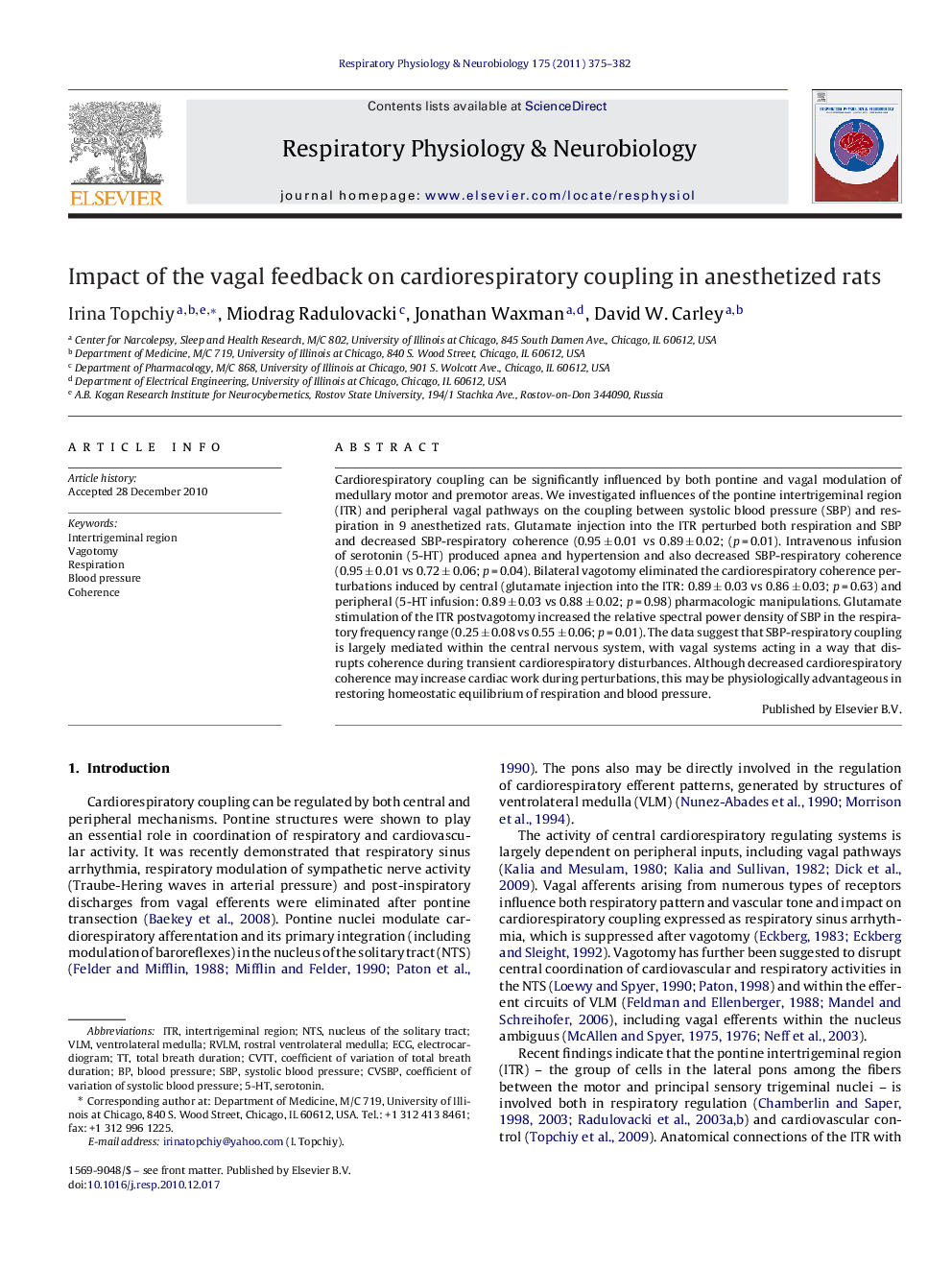| Article ID | Journal | Published Year | Pages | File Type |
|---|---|---|---|---|
| 5926512 | Respiratory Physiology & Neurobiology | 2011 | 8 Pages |
Abstract
Cardiorespiratory coupling can be significantly influenced by both pontine and vagal modulation of medullary motor and premotor areas. We investigated influences of the pontine intertrigeminal region (ITR) and peripheral vagal pathways on the coupling between systolic blood pressure (SBP) and respiration in 9 anesthetized rats. Glutamate injection into the ITR perturbed both respiration and SBP and decreased SBP-respiratory coherence (0.95 ± 0.01 vs 0.89 ± 0.02; (p = 0.01). Intravenous infusion of serotonin (5-HT) produced apnea and hypertension and also decreased SBP-respiratory coherence (0.95 ± 0.01 vs 0.72 ± 0.06; p = 0.04). Bilateral vagotomy eliminated the cardiorespiratory coherence perturbations induced by central (glutamate injection into the ITR: 0.89 ± 0.03 vs 0.86 ± 0.03; p = 0.63) and peripheral (5-HT infusion: 0.89 ± 0.03 vs 0.88 ± 0.02; p = 0.98) pharmacologic manipulations. Glutamate stimulation of the ITR postvagotomy increased the relative spectral power density of SBP in the respiratory frequency range (0.25 ± 0.08 vs 0.55 ± 0.06; p = 0.01). The data suggest that SBP-respiratory coupling is largely mediated within the central nervous system, with vagal systems acting in a way that disrupts coherence during transient cardiorespiratory disturbances. Although decreased cardiorespiratory coherence may increase cardiac work during perturbations, this may be physiologically advantageous in restoring homeostatic equilibrium of respiration and blood pressure.
Keywords
Related Topics
Life Sciences
Biochemistry, Genetics and Molecular Biology
Physiology
Authors
Irina Topchiy, Miodrag Radulovacki, Jonathan Waxman, David W. Carley,
